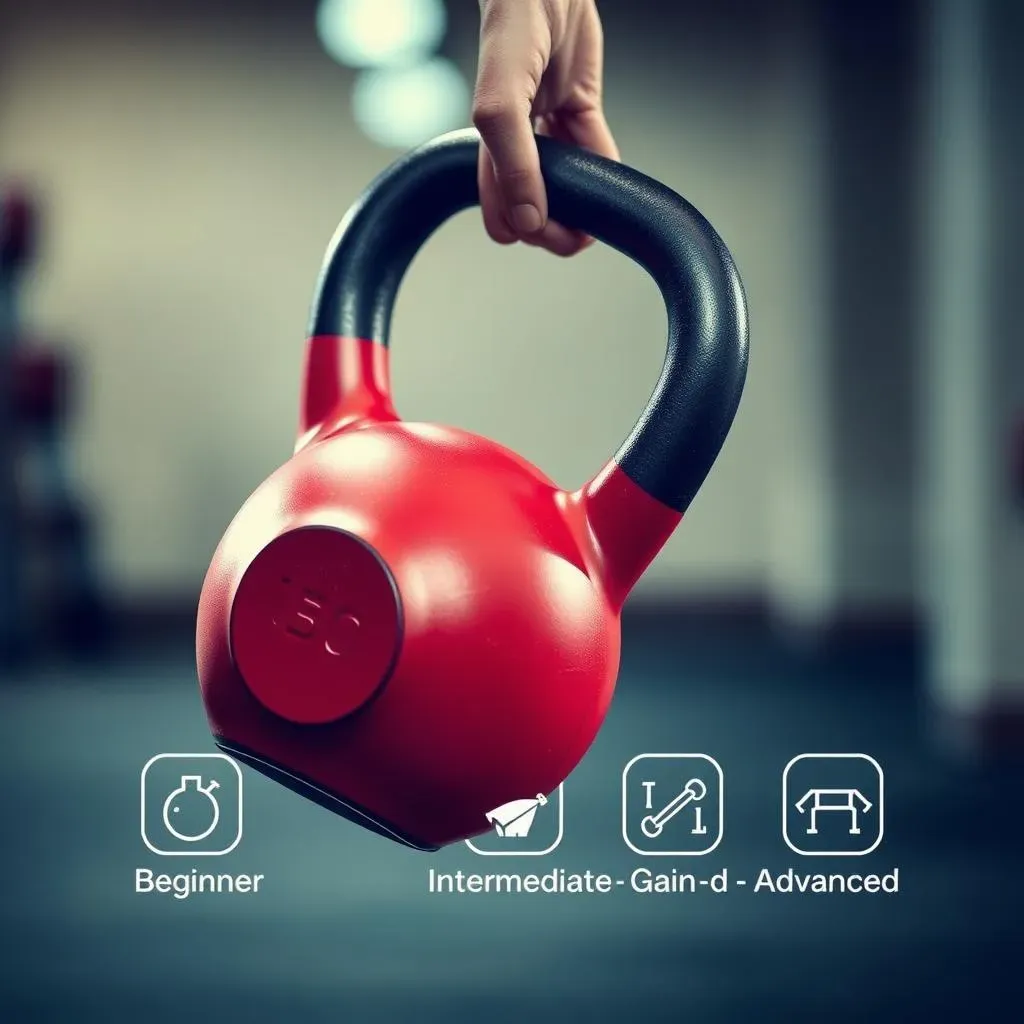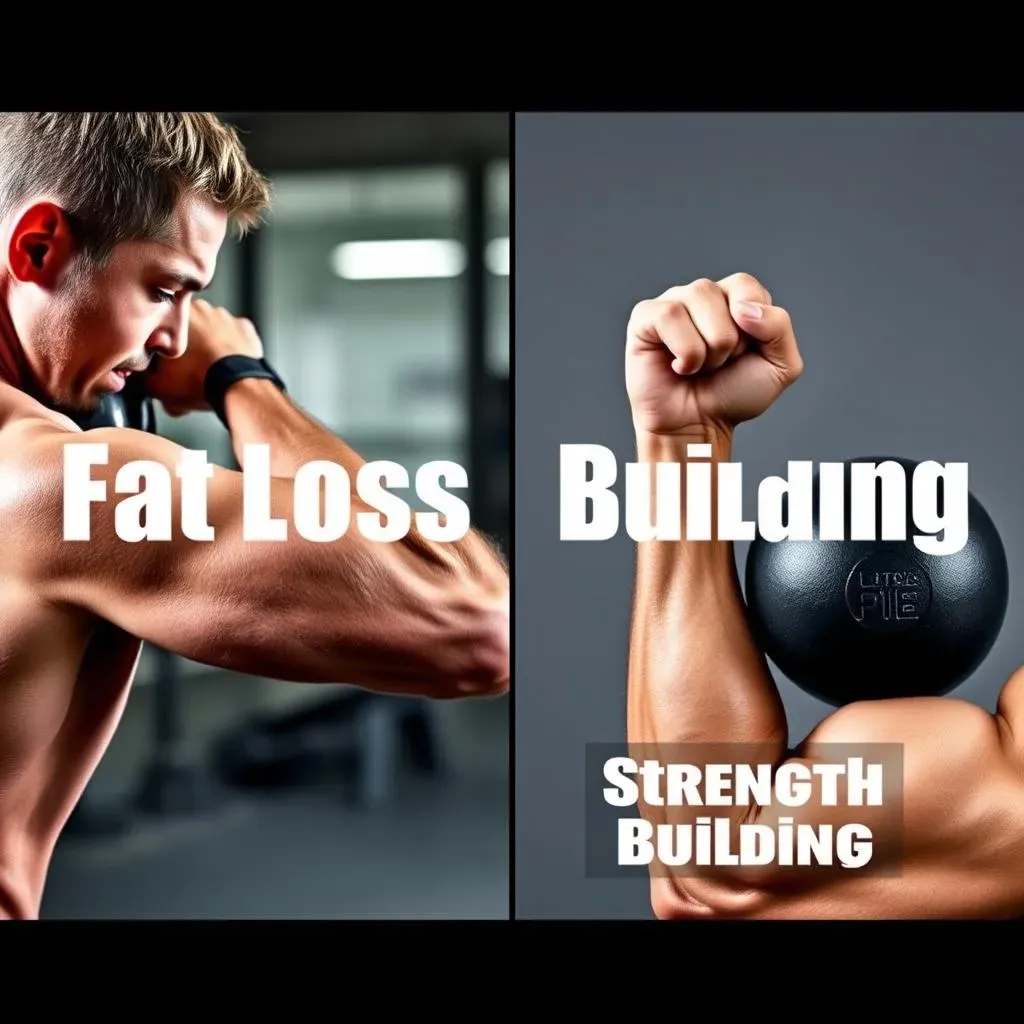Table of Contents
So, you're thinking about adding kettlebells to your workout routine? Awesome choice! Kettlebells are fantastic for building strength, burning fat, and improving overall fitness. But one of the most common questions people have is: how often should I do a kettlebell workout? It's a valid question because the frequency of your workouts can significantly impact your results. Too little, and you might not see the progress you want. Too much, and you risk overtraining and injury. This article is your guide to finding that sweet spot. We'll break down the factors that influence how often you should train with kettlebells, including your fitness goals, experience level, and the intensity of your workouts. We'll also provide sample workout schedules tailored to different objectives, whether you're looking to lose weight, build muscle, or simply improve your conditioning. Get ready to learn how to optimize your kettlebell training for maximum gains while staying safe and injury-free.
Understanding the Benefits of Kettlebell Training

Understanding the Benefits of Kettlebell Training
Full-Body Engagement
so what's the big deal about kettlebells? Unlike many traditional exercises that isolate specific muscle groups, kettlebell movements are inherently full-body. Think about a kettlebell swing – you're not just working your arms; you're engaging your back, glutes, hamstrings, core, and shoulders all at once. This makes kettlebell training incredibly efficient for building overall strength and conditioning.
It's like getting multiple exercises done in a single movement, saving you time and maximizing your results. Plus, this full-body engagement translates to real-world strength and improved functional fitness. You'll find everyday tasks like lifting groceries or carrying luggage become much easier.
Cardio and Strength Combined
Here's where kettlebells really shine. They bridge the gap between cardio and strength training. The dynamic, flowing movements involved in kettlebell exercises elevate your heart rate, giving you a cardiovascular workout while simultaneously building muscle and power. This is especially true for exercises like swings, snatches, and cleans.
Forget spending hours on the treadmill. With kettlebells, you can get an effective cardio workout and build strength at the same time. This combination is particularly beneficial for fat loss, as you're burning calories and building muscle, which helps boost your metabolism. Plus, it's a heck of a lot more fun than endless cardio!
Benefit | Description |
|---|---|
Full-Body Workout | Engages multiple muscle groups simultaneously. |
Cardio and Strength | Improves cardiovascular fitness while building muscle. |
Functional Fitness | Enhances real-world strength and movement. |
Time-Efficient | Provides a comprehensive workout in less time. |
Improved Mobility and Stability
Kettlebell training isn't just about brute strength; it also significantly improves your mobility and stability. Many kettlebell exercises require a wide range of motion, which helps to increase flexibility and joint mobility. The offset load of the kettlebell also challenges your stability, forcing your body to engage stabilizing muscles to maintain balance and control.
This improved mobility and stability can help prevent injuries and improve your overall movement patterns. You'll find that you move more fluidly and efficiently in your daily life, whether you're playing sports, hiking, or simply going about your day. Think of it as building a stronger, more resilient foundation for your body.
Factors Determining Your Kettlebell Workout Frequency

Factors Determining Your Kettlebell Workout Frequency
so you're sold on the benefits of kettlebells, but how often should you actually be swinging these things? The answer, like most things in fitness, is: it depends. Several factors come into play when determining your ideal kettlebell workout frequency. First off, consider your fitness goals. Are you trying to lose weight, build muscle, improve your endurance, or just maintain your current fitness level? Each goal requires a different approach. Then, think about your experience level. A complete beginner will need a different training schedule than someone who's been working out with kettlebells for years. And finally, don't forget about the intensity of your workouts and your recovery abilities. A high-intensity kettlebell session will require more recovery time than a lighter, more moderate workout.
Sample Kettlebell Workout Schedules for Different Goals

Sample Kettlebell Workout Schedules for Different Goals
For Fat Loss: High-Intensity Kettlebell Training
Looking to shed some pounds? Kettlebells can be your secret weapon. The key is to focus on high-intensity workouts that maximize calorie burn and boost your metabolism. Aim for 3-4 kettlebell sessions per week, with each session lasting around 20-30 minutes. Focus on compound exercises like swings, snatches, cleans, and thrusters, performing them in a circuit format with minimal rest between exercises. This will keep your heart rate elevated and torch calories like crazy.
Remember, consistency is key. Stick to your workout schedule and combine it with a healthy diet for optimal results. Don't be afraid to push yourself, but also listen to your body and take rest days when needed. A sample schedule could look like this: Monday - Kettlebell Circuit, Wednesday - Active Recovery (yoga or light cardio), Friday - Kettlebell Circuit, Sunday - Rest.
For Strength Building: Heavy Kettlebell Work
If your goal is to build strength, you'll need to focus on using heavier kettlebells and performing lower reps with longer rest periods. Aim for 2-3 kettlebell sessions per week, with each session focusing on specific movement patterns like squats, presses, pulls, and hinges. Choose exercises that allow you to lift a challenging weight for 5-8 reps, and perform 3-5 sets of each exercise. Focus on exercises like goblet squats, kettlebell presses, rows, and deadlifts.
Proper form is crucial when lifting heavy kettlebells, so make sure you have a solid foundation of technique before increasing the weight. Don't be afraid to work with a qualified kettlebell instructor to ensure you're performing the exercises correctly. Rest and recovery are also essential for strength building, so make sure you're getting enough sleep and nutrition to support muscle growth.
Goal | Frequency | Intensity | Focus |
|---|---|---|---|
Fat Loss | 3-4 sessions/week | High | Circuits, Compound Exercises |
Strength Building | 2-3 sessions/week | Heavy Weight, Low Reps | Specific Movement Patterns |
Avoiding Overtraining and Maximizing Results with Kettlebells

Avoiding Overtraining and Maximizing Results with Kettlebells
Listen to Your Body
This might sound cliché, but it's the golden rule of any fitness program, especially with kettlebells. Kettlebell training is intense, and it's easy to get carried away. Pay attention to your body's signals. Are you feeling excessively sore, fatigued, or experiencing any pain? These are signs that you might be pushing yourself too hard and need to back off. Don't ignore these warning signs, or you risk injury and burnout. Rest and recovery are just as important as the workouts themselves.
Think of it like this: your body is like a car. You can't drive it at full speed all the time without eventually needing to refuel and get maintenance. The same goes for your body. Give it the rest it needs to repair and rebuild. This doesn't mean you have to stop exercising altogether. Active recovery, like light stretching or yoga, can help improve blood flow and reduce muscle soreness. It's all about finding that balance between pushing yourself and allowing your body to recover.
Prioritize Proper Form
Good form is your best friend when it comes to kettlebell training. Not only does it help prevent injuries, but it also ensures that you're targeting the right muscles and getting the most out of each exercise. Don't sacrifice form for weight or reps. It's better to use a lighter kettlebell and perform the exercises correctly than to try to lift too heavy and risk injury.
If you're unsure about your form, seek guidance from a qualified kettlebell instructor. They can assess your technique and provide personalized feedback to help you improve. Consider filming yourself performing the exercises and comparing it to videos of proper form. This can help you identify areas where you need to improve. Remember, consistency and proper form are the keys to long-term success with kettlebell training.
- Listen to your body's signals.
- Prioritize proper form over weight or reps.
- Incorporate rest and recovery into your routine.
- Gradually increase the intensity and volume of your workouts.
Progressive Overload and Smart Programming
To continue seeing results from your kettlebell workouts, you need to progressively overload your body. This means gradually increasing the intensity, volume, or complexity of your workouts over time. However, it's important to do this in a smart and sustainable way. Don't try to add too much weight or volume too quickly, as this can increase your risk of injury. Instead, focus on making small, incremental changes over time.
A well-designed kettlebell program should also incorporate variety. Don't just do the same exercises every workout. Mix things up to challenge your body in different ways and prevent plateaus. Consider working with a qualified kettlebell coach to develop a personalized training program that meets your specific goals and needs. Remember, consistency, proper form, and smart programming are the keys to maximizing your results with kettlebell training while minimizing your risk of injury.
Principle | Description |
|---|---|
Progressive Overload | Gradually increasing the demands on your body over time. |
Variety | Incorporating different exercises and training methods. |
Specificity | Choosing exercises that align with your fitness goals. |
Recovery | Allowing your body adequate time to rest and rebuild. |
Conclusion: Finding Your Kettlebell Rhythm
Determining how often you should incorporate kettlebell workouts into your routine is a personal journey. It's about understanding your body, your goals, and your limits. Remember to start slow, listen to your body, and gradually increase the frequency and intensity of your workouts as you progress. Whether you're aiming to shed pounds, build strength, or simply improve your overall fitness, kettlebells can be a powerful tool. By following the guidelines and tips outlined in this article, you can create a kettlebell training schedule that's both effective and sustainable, helping you achieve your fitness aspirations while staying safe and injury-free. So, grab your kettlebell, find your rhythm, and get ready to transform your body and your fitness!